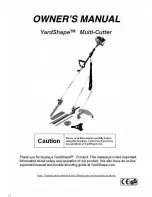
JesterML Operating Manual
Glossary
64 of 73
73-406-00 Issue 2.0
Ping-Pong
See
Bounce
.
Playback
Another name for the sequential memory stack. Also known as a
Cue Stack
or
Memory Stack
.
Position Button
This button turns the Multi-Function-Keys into Position Palette selection buttons, with
the Wheels controlling parameters which are grouped into the Position attribute. If
more than 3 Position parameters are available for the primary fixture, then the LED in
the button will flash. The additional parameters are accessed by repeatedly pressing
the Position button.
Movement Effects
are grouped under the Position attribute.
Preset
The default mode for the JesterML. Channel faders control preset channels and can
be crossfaded using the A and B Masters. In 2-Preset mode, the PROGRAM/GO
button is inactive. Preset Mode can be expanded to
Wide Mode
, when the
PROGRAM/GO button functions as a
Store
button.
Primary Fixture
The LCD above the wheels can only show the output values for one fixture at a time.
This fixture is called the primary fixture. It is indicated by the LED in it’s selection
button flashing when FIXTURES is selected.
Program
A mode of the JesterML, and also a function of the PROGRAM/GO button. Both
refer to storing a scene or chase as either a submaster or a memory.
PSU
Power Supply Unit. The external box of electronics which lowers the supplied power
voltage into the correct voltages for the JesterML.
Q
See
Cue
Quad
Quadrilateral, more specifically a rectangle – one of a number of
Movement Effects
available on the JesterML for fixtures with Pan & Tilt. The Movement Effect is
selected using the wheels when the appropriate POSITION wheel group is selected.
Ramp Down
A choice of attack for a chase. The intensity channels snap on to their programmed
level, then fade off.
Ramp Up
A choice of attack for a chase. The intensity channels fade up to their programmed
level, then snap off.










































